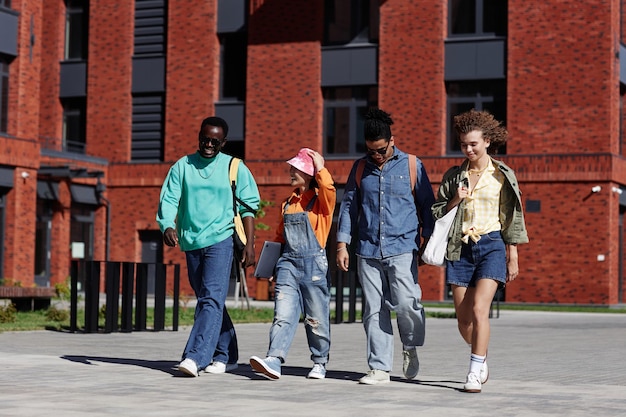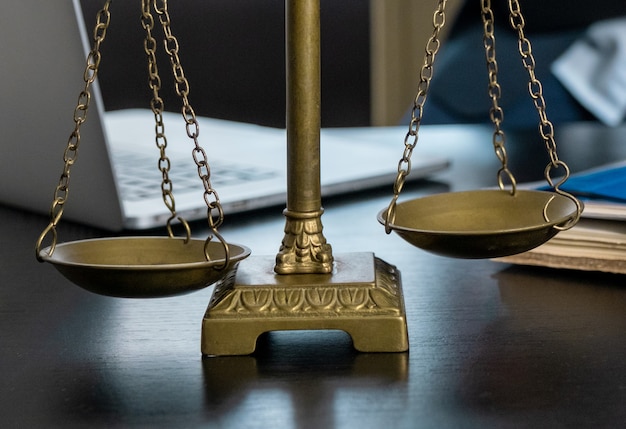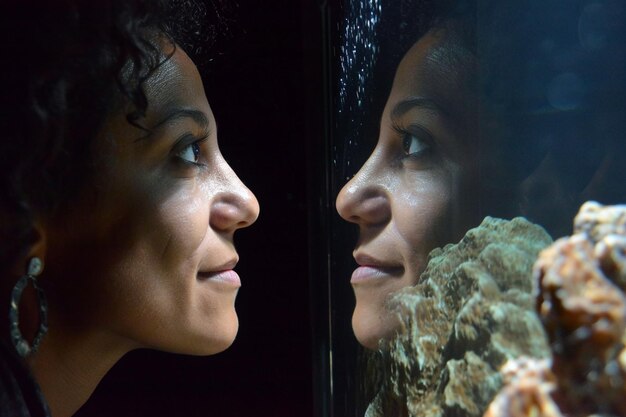Supreme Court to Review Affirmative Action: What’s at Stake for College Admissions?

The Supreme Court is set to hear a pivotal case challenging affirmative action policies in college admissions, potentially reshaping how universities consider race in their selection processes and impacting diversity on campuses nationwide.
Breaking: Supreme Court to Hear Case on Affirmative Action Policies in College Admissions – What’s at Stake? The upcoming Supreme Court case regarding affirmative action in college admissions has the potential to reshape the landscape of higher education in the United States. This landmark case will determine whether universities can continue to consider race as a factor in their admissions processes, impacting diversity efforts and the future makeup of college campuses across the nation.
The Genesis of Affirmative Action
Affirmative action policies have a long and complex history in the United States. Understanding their origins and evolution is crucial to comprehending the current legal challenge before the Supreme Court.
Early Intentions and Implementation
The concept of affirmative action emerged in the 1960s as a means to address historical and systemic discrimination against marginalized groups, particularly racial minorities and women. The initial intent was to create a more level playing field in employment and education.
These policies were implemented through various federal laws, executive orders, and court decisions, aiming to ensure equal opportunities and prevent discriminatory practices. However, the specific methods and scope of affirmative action have been subject to ongoing debate and legal scrutiny.
Key Milestones in Affirmative Action
Several landmark Supreme Court cases have shaped the legal framework surrounding affirmative action. These cases have explored the constitutionality of race-conscious admissions policies and set limits on their application.
- Regents of the University of California v. Bakke (1978): The Court ruled that while affirmative action is permissible, strict racial quotas are not.
- Grutter v. Bollinger (2003): The Court upheld the University of Michigan Law School’s admissions policy, which considered race as one factor among many, to achieve a diverse student body.
- Gratz v. Bollinger (2003): The Court struck down the University of Michigan’s undergraduate admissions policy, which awarded points to applicants based on race.
Affirmative action policies have evolved significantly since their inception, adapting to changing legal interpretations and societal expectations. However, the fundamental goal of promoting diversity and equal opportunity remains at the heart of the debate.
In conclusion, the genesis of affirmative action policies reflects a concerted effort to rectify historical inequalities and foster a more inclusive society. The upcoming Supreme Court case will determine whether these policies can continue to play a role in shaping college admissions processes.

The Cases Before the Supreme Court
The Supreme Court is set to hear two related cases challenging the legality of affirmative action policies in college admissions. These cases have the potential to overturn decades of precedent and significantly alter the way universities consider race in their admissions decisions.
Students for Fair Admissions (SFFA) v. Harvard
The first case, *Students for Fair Admissions (SFFA) v. Harvard*, alleges that Harvard University’s admissions policies discriminate against Asian American applicants. The plaintiffs argue that Harvard uses subjective criteria to disadvantage Asian American students, holding them to a higher standard than other applicants.
SFFA contends that Harvard’s consideration of race violates the Equal Protection Clause of the Fourteenth Amendment. They claim that Harvard’s policies result in a racial balancing act, which is unconstitutional under Supreme Court precedent.
Students for Fair Admissions (SFFA) v. University of North Carolina
The second case, *Students for Fair Admissions (SFFA) v. University of North Carolina*, challenges the University of North Carolina’s (UNC) affirmative action policies. Similar to the Harvard case, SFFA argues that UNC’s consideration of race is unconstitutional and discriminatory.
However, the UNC case also involves unique issues related to the university’s status as a public institution. SFFA claims that UNC’s policies violate both the Equal Protection Clause and Title VI of the Civil Rights Act of 1964, which prohibits discrimination based on race in programs receiving federal funding.
Central Arguments and Legal Theories
SFFA’s central argument is that race should be a “neutral” factor in college admissions. They contend that universities should focus solely on academic merit and individual qualifications, without considering an applicant’s race or ethnicity.
- Equal Protection Clause: SFFA argues that affirmative action policies violate the Fourteenth Amendment’s guarantee of equal protection under the law.
- Title VI of the Civil Rights Act: SFFA claims that UNC’s policies violate Title VI, which prohibits discrimination based on race in federally funded programs.
- Strict Scrutiny: SFFA asserts that affirmative action policies should be subject to “strict scrutiny,” the highest level of judicial review, requiring a compelling government interest and narrowly tailored means.
The cases before the Supreme Court represent a significant challenge to affirmative action policies. The Court’s decisions could have far-reaching implications for diversity in higher education.
The core of these cases hinges on whether universities can continue to consider race as one factor among many in their admissions processes or whether such considerations are unconstitutional. The Supreme Court’s rulings will shape the future of affirmative action in the United States.
Potential Outcomes and Impacts
The Supreme Court’s decisions in the affirmative action cases could have a profound impact on college admissions policies and the composition of student bodies across the country.
Overturning Precedent: A New Legal Landscape
If the Supreme Court rules in favor of SFFA, it could overturn decades of precedent upholding the constitutionality of affirmative action. This would create a new legal landscape, prohibiting universities from considering race in their admissions decisions.
Such a ruling would likely lead to a significant decrease in the representation of racial minorities in selective colleges and universities. Studies have shown that without affirmative action, the enrollment of underrepresented groups would decline substantially.
Affirming Affirmative Action: Maintaining Diversity Efforts
Alternatively, the Supreme Court could uphold the existing legal framework, affirming the constitutionality of affirmative action. This would allow universities to continue considering race as one factor among many in their admissions processes, within the limits set by previous Supreme Court decisions.
An affirmation of affirmative action would enable universities to maintain their diversity efforts and ensure that their student bodies reflect the diverse backgrounds and perspectives of the nation.
Alternative Approaches to Diversity
Regardless of the outcome, universities may need to explore alternative approaches to promoting diversity in their student bodies. These approaches could include:
- Targeting socioeconomic disadvantage: Focusing on applicants from low-income backgrounds or disadvantaged communities.
- Expanding outreach and recruitment efforts: Actively recruiting students from underrepresented groups.
- Eliminating legacy preferences: Discontinuing preferential treatment for children of alumni.
These alternative approaches may help universities achieve their diversity goals while complying with the law. However, they may not be as effective as affirmative action in promoting racial diversity.
The potential outcomes of the Supreme Court cases are significant, with the power to reshape higher education. Universities need to consider alternative strategies to maintain diversity, no matter the decisions.
The Role of Public Opinion
Public opinion plays a crucial role in shaping the debate over affirmative action. Understanding the diverse perspectives and attitudes towards these policies is essential for navigating the complex legal and social issues involved.
Divergent Views on Affirmative Action
Public opinion on affirmative action is divided along racial, ethnic, and political lines. White Americans are generally less supportive of affirmative action than Black and Hispanic Americans. Republicans are typically more opposed to these policies than Democrats.
Some people view affirmative action as a necessary tool for promoting equal opportunity and addressing historical discrimination. They argue that these policies help create a more level playing field and ensure that underrepresented groups have access to education and employment opportunities.
Arguments Against Affirmative Action
Others believe that affirmative action is unfair and discriminatory, arguing that it gives preferential treatment to certain groups based on race or ethnicity. They contend that admissions and hiring decisions should be based solely on merit and individual qualifications.
Critics also argue that affirmative action can lead to reverse discrimination, where qualified individuals from majority groups are denied opportunities in favor of less qualified individuals from minority groups. They believe that such policies can create resentment and division.
The Impact of Public Discourse
Public discourse on affirmative action can influence the legal and political landscape surrounding these policies. Media coverage, political rhetoric, and public debates can shape public opinion and put pressure on policymakers and the courts.

The arguments presented by both supporters and opponents of affirmative action can sway public attitudes and influence the Court’s decisions with amicus briefs, protests, and other forms of influencing public opinion on this very important topic.
Public opinion reflects a wide range of beliefs and values. The court’s ultimate decision might either align or clash with public sentiment, leading to broader societal consequences.
The Broader Societal Implications
The Supreme Court’s rulings on affirmative action will have broader societal implications beyond the realm of college admissions. These decisions could impact diversity in various sectors and influence the ongoing dialogue about race and equality.
Impact on Diversity in the Workforce
If the Supreme Court strikes down affirmative action, it could lead to a decrease in diversity in the workforce. Many employers rely on college and university graduates to fill professional positions. If colleges become less diverse, the pool of qualified minority candidates for these positions could shrink.
This could have a ripple effect on various industries, leading to a less diverse and inclusive workforce. Some companies may need to re-evaluate their diversity and inclusion programs to ensure that they comply with the law.
The Future of Race Relations
The affirmative action cases also raise fundamental questions about the future of race relations in the United States. Some argue that affirmative action is necessary to address historical inequalities and promote racial reconciliation.
Others believe that these policies exacerbate racial tensions and create a sense of victimhood among minority groups. They contend that a colorblind approach to admissions and hiring is the best way to achieve racial equality.
Promoting Equal Opportunity for All
These cases have ignited passionate debates and highlight the importance of promoting equal opportunity for all individuals, regardless of their race or background. The Supreme Court’s decisions are poised to shape the future landscape of higher education and the broader societal discourse on race and equality.
- Equal Access: Ensuring that all students, regardless of background, have access to quality education and resources.
- Holistic Review: Using a comprehensive approach to evaluate applicants, considering their unique experiences and perspectives.
- Supporting Underrepresented Groups: Providing additional support and resources to help students from underrepresented groups succeed in college.
The Supreme Court’s rulings on affirmative action will have far-reaching consequences for diversity, and the ongoing dialogue about race and equality in the United States.
Historical Context and Evolution of Affirmative Action
Understanding the historical context and evolution of affirmative action policies is crucial for grasping the complexities of the current legal challenges before the Supreme Court.
Origins in the Civil Rights Movement
Affirmative action emerged from the Civil Rights Movement of the 1960s, aimed at dismantling discriminatory practices and institutions that had historically disadvantaged marginalized communities, particularly African Americans.
These policies sought to proactively address the lingering effects of segregation and systemic racism by ensuring equal opportunities in education, employment, and other areas of life.
Key Legislative and Executive Actions
Several key legislative and executive actions played a pivotal role in shaping the landscape of affirmative action. One of the most prominent was President Lyndon B. Johnson’s Executive Order 11246, issued in 1965, which prohibited federal contractors from discriminating against employees based on race, color, religion, sex, or national origin.
The order also mandated that contractors take affirmative action to ensure that applicants are employed, and that employees are treated during employment, without regard to their race, color, religion, sex, or national origin.
Legal Challenges and Supreme Court Decisions
Throughout its history, affirmative action has faced numerous legal challenges, raising questions about its constitutionality and the extent to which race can be considered in admissions and hiring decisions. The Supreme Court has played a significant role in shaping the legal boundaries of affirmative action through landmark cases.
The courts have consistently maintained that while affirmative action is permissible, it must be narrowly tailored to achieve a compelling government interest, such as promoting diversity in higher education. The upcoming Supreme Court case may significantly alter the interpretation.
| Key Point | Brief Description |
|---|---|
| ⚖️ Supreme Court Case | Challenges affirmative action in college admissions. |
| 🎓 College Diversity | May decrease if affirmative action is struck down. |
| 🤝 Equal Opportunity | Aims to ensure fair access to education. |
| 🏛️ Future Implications | Could reshape workforce diversity and race relations. |
Frequently Asked Questions (FAQ)
▼
Affirmative action refers to policies that aim to address historical and systemic discrimination against marginalized groups, particularly in education and employment, by giving preferential treatment to members of those groups.
▼
The Supreme Court is hearing the case to determine whether affirmative action policies in college admissions are constitutional, specifically addressing claims of discrimination against Asian American applicants.
▼
The potential outcomes include upholding affirmative action, overturning it completely, or setting new limitations on how race can be considered in admissions processes by the universities in the USA.
▼
If affirmative action is struck down, colleges may need to find alternative ways to promote diversity on their campuses, such as focusing on socioeconomic factors or expanding outreach programs.
▼
Arguments for include promoting equal opportunity and addressing historical discrimination, while arguments against claim it is unfair, leads to reverse discrimination, and should prioritize merit-based admissions.
Conclusion
The Supreme Court’s decision on affirmative action will have far-reaching consequences for higher education and the broader societal landscape. As the nation awaits the ruling, discussions on diversity, equality, and merit continue to shape the narrative surrounding this landmark case.
